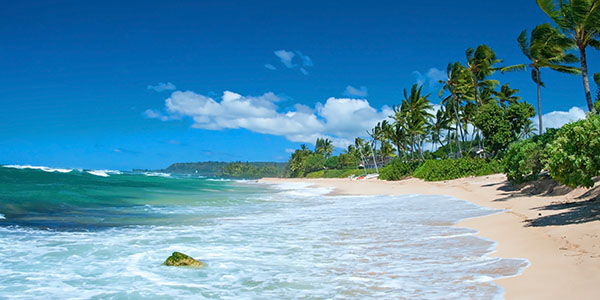
by Jiachen Jiang Friday, March 13, 2015

In the 20th century, global temperatures held steady when Pacific trade winds were strong, but rose when these tropical winds were weak, according to recent research. Credit: ©dollarphotoclub.com/Vacclav
Earth’s average atmospheric temperature warmed by about 1.3 degrees Celsius over the course of the 20th century. However, the rate of increase during that time was not constant and scientists have been unable to fully explain the timing and pattern of warming. Now, a recent study has identified a correlation between global temperatures and the strength of Pacific trade winds that may help clear up the some of the confusion.
Global temperatures rose 0.4 degrees Celsius on average from 1910 to 1940, after which they remained stable for the next three decades. Around 1970, temperatures began to rise again, warming 0.75 degrees Celsius through the end of the 20th century. Anthropogenic forcings, such as carbon dioxide emissions, as well as changes in incoming solar radiation and the output of volcanic emissions are all known to impact global temperatures. But, the fluctuations in rates of atmospheric warming diverge from climate model predictions that account for these factors. Early-20th-century warming, for example, was roughly double that predicted by recent modeling, suggesting the role of “internal” climatic influences that also influence atmospheric warming, such as changing ocean temperatures and winds.
In the new study, scientists led by Diane Thompson of the University of Arizona (now at the National Center for Atmospheric Research in Boulder, Colo.), used corals to uncover a relationship between the strength of Pacific trade winds and climate variation through the 20th century. The research, published in Nature Geoscience, suggests that the same connection may also be involved in the recent slowing of warming rates and apparent stabilization of global temperatures, an observation that earlier studies have attributed to heat storage in the ocean.
Using cores drilled from reefs in the Tarawa Atoll, located near the intersection of the international date line and the equator, Thompson and her team analyzed the chemical compositions of coral skeletons from colonies that lived between 1894 and 1982. These corals grow in west-facing lagoons, which are sheltered from trade winds blowing from the east. When the trade winds are weak, however, bursts of westerly winds typically pick up in the tropical Pacific. These wind bursts stir up lagoon sediments rich in elements like manganese, which dissolve into the surrounding water and are incorporated into the corals’ calcium carbonate skeletons. As a result, the ratio of manganese to calcium within the skeleton samples correlates with the timing and intensity of wind bursts from the west. This allowed the team to estimate Pacific trade-wind strengths dating back to the end of the 19th century, roughly a half century before reliable wind observations began in the region.
Thompson and her colleagues found that global warming was more rapid during periods of weak Pacific trade winds, including from about 1910 to 1940 and after 1970. Conversely, when the trade winds blew stronger, circulation in the ocean increased, allowing it to take up more heat, which limited warming in the atmosphere. The current pause in warming, which began in the late 1990s, has probably resulted in part from a period of strong tropical Pacific winds, Thompson says, adding that it’s likely the rate of global warming will accelerate once the trade winds inevitably weaken again.
Previous studies have predominantly focused on changes in the North Atlantic Ocean as the origin of fluctuations in atmospheric warming, says Stefan Brönnimann of the University of Bern in Switzerland, who authored a commentary on the study, also published in Nature Geoscience. The current study examining the Pacific Ocean offers a “fresh and interesting idea,” but it is clear that more data — from observations, other proxies and modeling — must be gathered to test the researchers’ hypothesis, Brönnimann says. For instance, the new research is based on a proxy record, he notes, and some observation-based datasets of wind and sea-surface temperatures do not show as strong of a correlation between temperatures and trade winds.
Thompson says that additional proxy records of past conditions in the tropical Pacific, derived from coral and tree ring data, support her team’s findings, although additional records would be useful. “There are a lot more islands in the Pacific where we can apply this same approach to study changes in winds,” she says, which will allow the team to extend the wind record further into the past.
© 2008-2021. All rights reserved. Any copying, redistribution or retransmission of any of the contents of this service without the expressed written permission of the American Geosciences Institute is expressly prohibited. Click here for all copyright requests.